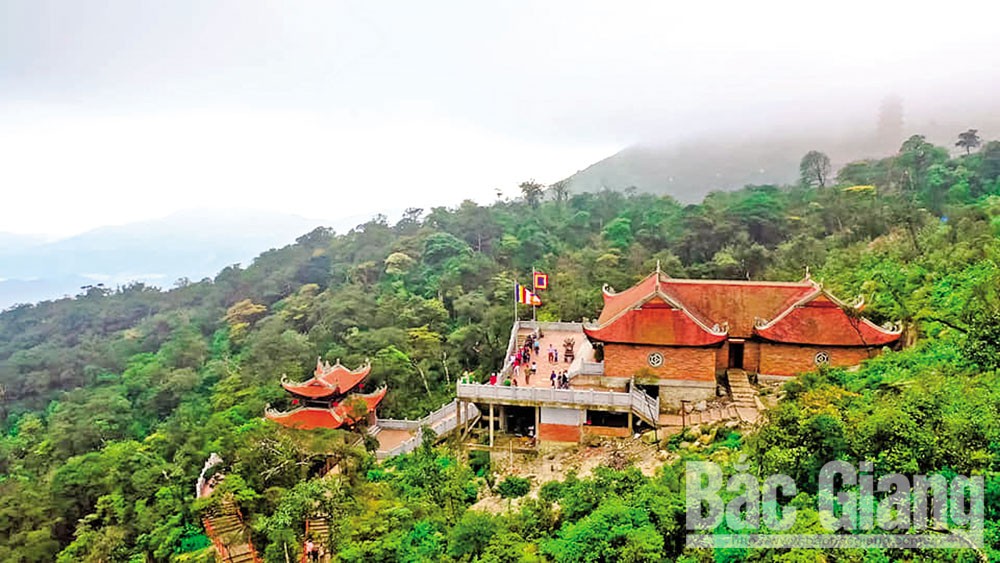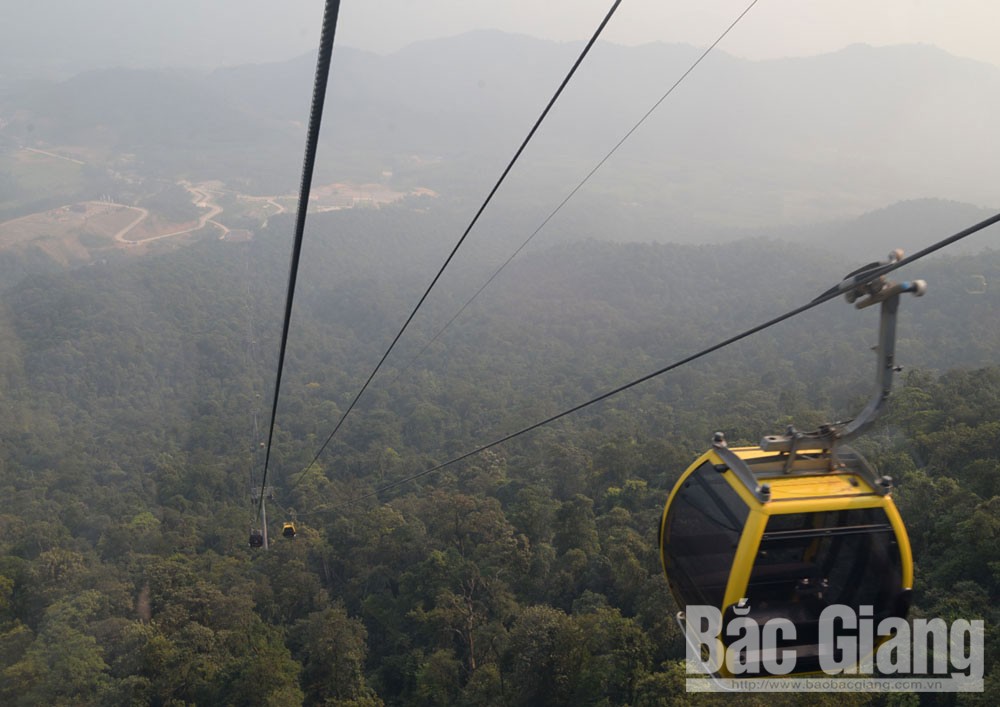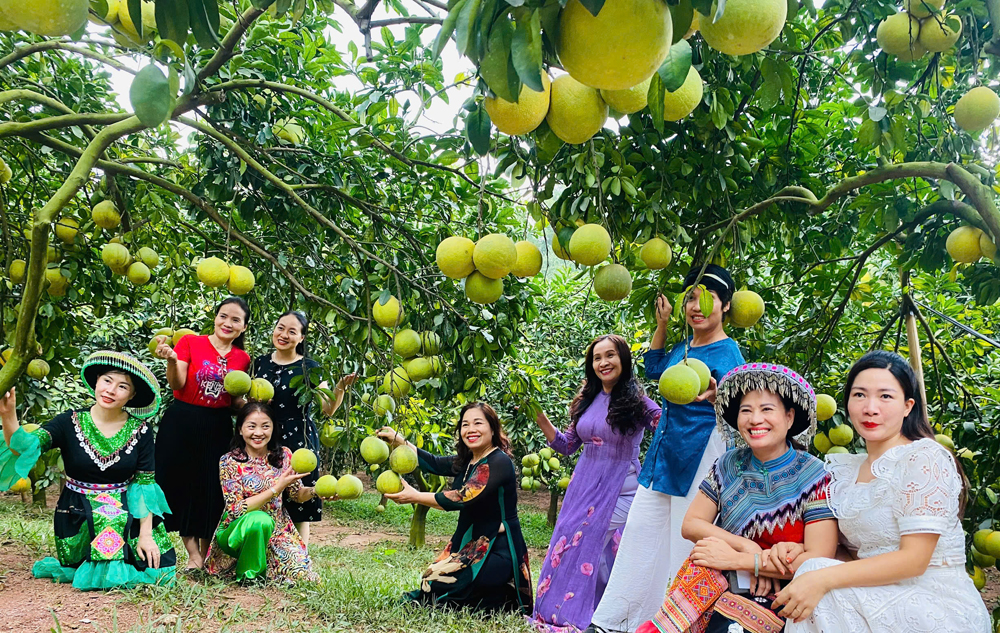A day in Tay Yen Tu
Away from home for more than 40 years, I still remember the forests colorful with purple rose myrtle in early summer and the days of collecting chestnuts on the opening day of the new school year.
 |
|
Thuong (Upper) Temple in Yen Tu. |
Earlier last year, Tay Yen Tu (the western part of Yen Tu Mountain Range) opened the Spring Festival and launched a cable car system. So I am always eager with a trip to Tay Yen Tu...
From Bac Giang city, going along the provincial road 293 (also called the spiritual route with a total length of 74 km), we headed to Luc Nam. As a midland district, Luc Nam is home to crops such as taro, jicama, tomato, kohlrabi, onion, and garlic. The villages are based at the foot of the hills, with the poetic ponds and lakes. There are wide, straight roads of up to tens of kilometers in length.
Crossing the Luc Nam River, we gradually advanced to the forest. Arriving at Mo Spring, we stopped for half an hour. Because we used to go to Thuong (Upper) Temple and the waterfall area, this time we only called at Ha (Lower) Temple where Princess Que My Nuong is worshipped. At the front of the temple, there are an ancient banyan tree and three ancient Bombax ceibas that have been honored as heritage trees.
 |
|
Pilgrims climb to Dong Pagoda from the western side of Yen Tu. |
The car ran slowly amid the forests, mountains and bridges. Scattered on the forests are tents and farms. Going more than a dozen kilometers, we reached But Pass. The pass, which is about three kilometers long, is considered a water way dividing Luc Nam and Son Dong districts.
Some people say this route is "beautiful as a dream" and it is true. The road is quiet, with the absence of people. For a long time, there was a motorbike passing by. On the side of the mountain, the shadows of white hats were hidden behind cassava and maize fields. Several buffalo grazed the grass peacefully. Rows of white reeds fluttered on the roadside, stretching to the end of the forest.
Going through one more section, we reached the center of Tuan Mau commune. There is a village of Dao Thanh Y people which is considered "a land of beautiful girls ". Legend has it that they are descendants of the royal concubines of the ancient Tran dynasty who stayed in this region of high mountains and deep forests.
Through the parking lot, the group visited a pagoda newly built on a high hill. There was still much red earth around. Maybe in the next ten or twenty years, this place will be filled with fairy tales. The soil color will fade over the years. Green trees will grow into ancient trees, covering the stone paths and the dark tile roofs.
On the way back to the cable car station, we met a person who was sweeping leaves. People living in the middle of the beautiful landscape also became beautiful. This is the manner and lifestyle of people living in the sacred region of Yen Tu.
The cable car saw few passengers. The cabins moved slowly, with a ravine and a primeval forest below. The primeval forest boasts layers of high trees.
 |
|
The cable car system. |
Just over ten minutes, we were on the top of the mountain with a height of approximately a thousand meters. Although we already saw Dong Pagoda, it still took us an hour to get there. The worn stone path became smooth. Trees and grass were sparse. Plants on the top of rocky mountains often have few leaves and spindly trunks and branches. On the two sides of the road were bamboo rows with some newly planted.
Before reaching Dong Pagoda, near the great statue of King-Monk Tran Nhan Tong was a stone statue of Taoist priest An Ky Sinh. Suddenly we met the journalists from Hanoi and the tourists from the Repubic of Korea again.
The human sounds were rapidly sunk into the breeze and the air. This side is quite Tay Yen Tu, with rolling mountains and the other side is Dong Yen Tu (the eastern part of Yen Tu Mountain Range), with the clear sky, light winds, yellow sunlight, cold autumn weather, and the harmony between the heaven and the earth and between the human world and the Buddha realm...
Perhaps Tay Yen Tu is increasingly attracting tourists from all walks of life because of its fresh air and quiet scenery. On the foot of Tay Yen Tu, an eco-spiritual tourism area is being formed. It will be an ideal destination for tourists on the pilgrimage to the Buddha realm.
Associate Prof. Dr. Nguyen Huu Son
 Bắc giang
Bắc giang















Reader's comments (0)